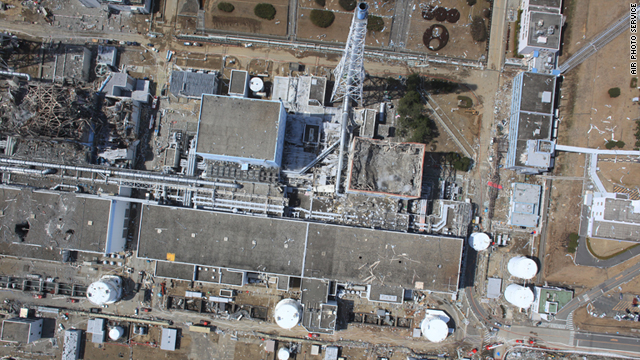Japan TimesMonday, May 2, 2011
from Kyodo News
Worker found overexposed to radiationhttp://search.japantimes.co.jp/cgi-bin/nn20110502a1.htmlSecond woman over legally set limitTokyo Electric Power Co. said Sunday that a woman at the crippled Fukushima No. 1 power plant has been overexposed to radiation, making her the second at the plant to be subjected to more than the legal limit.
The woman, who received a total radiation exposure of 7.49 millisieverts, hasn't complained of any health problems so far and will be checked by a doctor on Monday, the beleaguered utility said.
The legal radiation limits for nuclear plant workers are 100 millisieverts per five-year period and 50 millisieverts for a single year. The limit for female workers, however, is a more closely regulated 5 millisieverts per three-month period, due to the chance of pregnancy.
The worker in question, who is in her 40s, was found to have suffered more internal than external radiation exposure, with the internal exposure reaching 6.71 millisieverts.
She was providing care to workers who had become sick at a building on site that was being used as the operation center for the crisis, the utility known as Tepco said.
Tepco said the woman may have inhaled particles of radioactive substances that got on the clothing of the other workers in the early stages of the crisis because most of the staff in the building at the time weren't wearing masks. The woman left the plant on March 15, it added.
The announcement followed a similar one made by the utility on Wednesday in which it said a female radiation worker had been exposed to doses far above the limit for women.
That woman had absorbed 17.55 millisieverts of radiation by March 23, the day when all female employees were evacuated from the plant.
Tepco also mentioned Sunday that it has found that two of its four female employees who are not radiation workers have been exposed to 2.59 and 2.81 millisieverts of internal radiation, respectively.
The legal limit for the general public is 1 millisievert per year, excluding exposure from medical procedures. The total amount of radiation absorbed by the two general employees, who also were working in the makeshift operations center when the crisis began and stayed through March 23, was 3.37 and 3.42 millisieverts, respectively.
Tepco is coming under fire from the government and the public for its lax radiation checks. The maligned utility started checking exposure levels for female workers on March 22 — 10 days after the plant ejected massive amounts of radioactive material into the sky when a hydrogen explosion blew off the roof of one reactor.
Meanwhile, two workers who were laying cable at the plant who were briefly hospitalized for alpha ray burns after stepping into puddles of highly radioactive water that no one warned them about, were revealed Saturday to have absorbed nearly 250 millisieverts of radiation.
A Health, Labor and Welfare Ministry ordinance limits individual radiation exposure to 100 millisieverts a year in emergencies. But that level was unilaterally raised to 250 millisieverts on March 15 in a bid to keep enough staff on hand to deal with the nuclear crisis at the plant.
As the workers reach their dosage limits and Tepco's subcontractors refuse to exceed the 100-millisievert precrisis limit, the utility is reportedly attempting to recruit volunteers with high pay to jump into the plant to help with repairs requiring only brief exposure to the plant's high radiation.
On Wednesday, it was announced that one of the female employees at the plant was exposed to radiation doses far above the limit for female workers. She was exposed to 17.55 millisieverts of radiation by March 23, when all the female employees left the plant.





